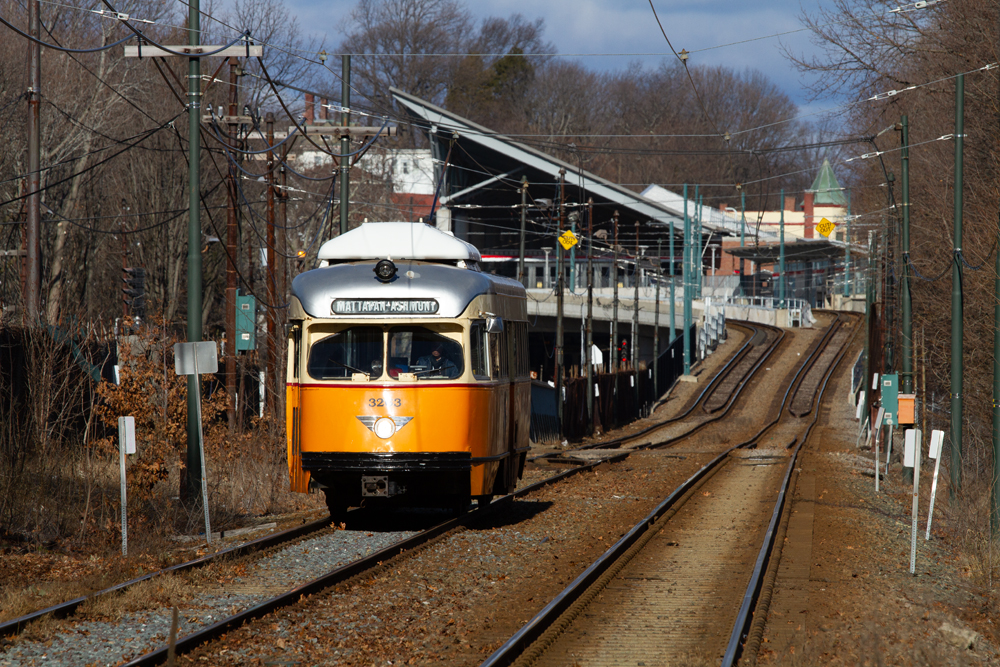
BOSTON — A project to refurbish 1940s-vintage PCC trolley cars used on one Massachusetts Bay Transportation Authority line is more than two years behind schedule, with the first of the cars now expected to be in service by the end of the winter, the Boston Globe reports.
Eight cars are being updated in a $7.9 million project for use on the 2.6-mile, eight-station Mattapan line, which connects to the subway Red Line and 20 bus routes. The first was originally supposed to be in service in August 2019, and more recently was projected to be in operation before the end of 2021.
But the MBTA’s chief engineer, Erik Stoothoff, said work on the first car has faced issues ranging from COVID-19 delays to removal of lead paint and mis-sized parts. Cars were also found to have more corrosion and damage than anticipated.
He told the Globe he is hopeful subsequent cars will be refurbished more quickly: “Ideally, as we go through, the learning curve should be shortened.”














The project calls for rebuilding 8 PCC cars for $7.9 million or just less than $1 million per car. Could suitable new vehicles be purchased, shipped, tested, certified and commissioned for less than $1 million per unit? How much would have to be spent on spares and test equipment to support the new vehicles?
I am not a fan of operating companies conducting major rebuilds – the project is already late. That said, if the individuals rebuilding the cars go on to maintain them they should have extensive knowledge about how they were put together.
Should have had Brookside do the work at their shop, as have most of the other transit systems that have refurbished the old PCC’s.
Could they use a new modern frame, wheels ,propulsion system, wiring, and hydraulics and mate the old body to it.This could be like the classic car rebuilders that will put a high HP engine, new chassis,AC ,automatic trans on a 1940 pickup on tv.
People don’t seem to realize that they have essentially ordered new equipment. Mechanically and electrically, this is a 21st century streetcar. The biggest problems slowing things down would’ve still happened had they gone into a brand new carbody.
It runs remarkably well. I went to ride it this summer.
Just have Siemens engineer a piece of equipment that can replace the old streetcars. Knowing that a fully-functional light rail (Or whatever they call it) is using streetcars from the Truman era is making me uncomfortable. I like older equipment, but that stuff belongs in a museum, not on a functioning rail line.
Therese: Are you aware of the refurbished PCCs that operate daily on Market in San Francisco. I hope that doesn’t make you feel uncomfortable.
Charles, not that simple. I understand the existing bridges cannot support the weight of new equipment being the biggest issue, and most expensive fix.
When will MBTA give up and order more equipment?
Most new transit equipment seems to have many design or manufacturing problems – Orange and Red line cars for Boston, 7000 series cars for DC, Septa cars in Philadelphia,